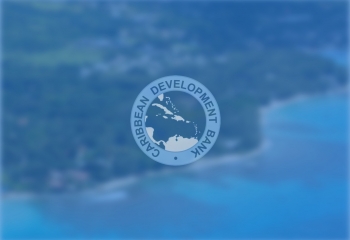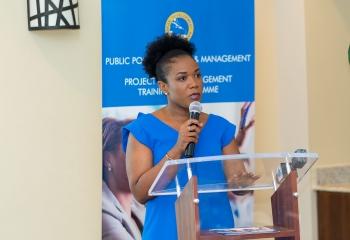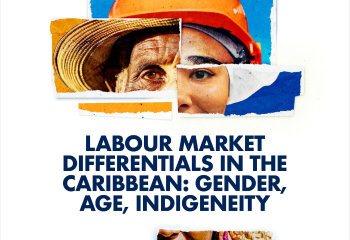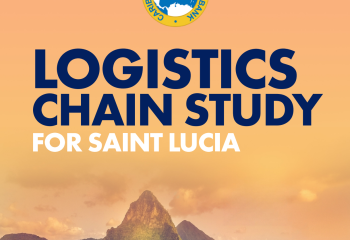Keynote: Sustainable Energy Opportunity Paths for the Caribbean
It is truly an honour to address participants at this Caribbean Energies and Investment Summit (CEIS) and contribute to this timely and meaningful discussion. I thank the conference organisers for the opportunity.
The need to embrace renewable energy is not new to us in the Region. The CARICOM Secretariat and Caribbean Centre for Renewable Energy and Energy Efficiency (CCREEE) have championed a transition policy for the Region and advocated strongly in international forums. Here in Barbados, the Government has progressed significantly, including with the largest public sector e-mobility across the Region — a visible sign of what can happen when public policy meets and supports development-driven investment.
However, we have far to go. So today, I will focus my remarks on the urgent necessity for a just energy transition and offer a couple of solutions.
The Caribbean, like other Regions, has a love-hate relationship with energy generated by fossil fuels. It is generally accepted that a safe, reliable, and affordable energy supply is essential to the viability of all economies. Indeed, energy is the lynchpin of our economies, fueling every industry from manufacturing to transport to services and impacting several Sustainable Development Goals, such as poverty reduction, citizen safety, and underwriting digital connectivity.
However, energy prices are notoriously volatile, benefitting exporters and crippling importers of energy. In general, exporters amass wealth and importers acquire debt, with long term consequences. We can all recall the Organisation of the Petroleum Exporting Countries oil crisis in the 1970s that practically crippled the fledgling CARICOM grouping. More recently, as we fought our way back from the global pandemic, international oil prices spiked and in the period January to June 2022, the people of the Caribbean had to find an extra 2 billion United States dollars (USD) to pay for energy. These disruptions typically have permanent impacts on structurally weak economies, amplifying their vulnerability to shock and reducing their resilience capacity.
For our countries, volatility in the price of fossil fuels is but one challenge. An even greater challenge is the effect of the continued reliance on fossil fuel extraction — namely, climate change and its impact. In spite of our minimal contribution to the total use of fossil fuels, our countries bear the brunt of the impact of climate change, which has resulted in rising sea levels, devastating droughts, and dwindling agricultural yields. The scientific community is clear — the continued use of fossil fuels will have a devastating impact on life on earth. We therefore need a sustainable energy policy!
For us, the solution is simple — there can be no sustainable development without sustainable energy. Embracing renewable energy is therefore not a choice, but a necessity.
Facing an unrelenting climate crisis, logic would suggest that we will be better off in the Caribbean if we pool our limited resources and recast our economies from structural dependency to empowerment. I propose that we must pivot from being on the periphery of energy innovation, re-invention, and usage to being the centre of Renewable Energy, investing the savings made in the economic growth of our economies and the empowerment of our people. This is foundation on which we will build resilient prosperity for our citizens, the basis on which we sustain our economies and livelihoods of our citizens in the face of the exogenous shocks that have defined our history.
If we reflect on the evolution of our societies – forged out of conflict but spurred by creativity and ingenuity – we arrive at the irrefutable observation that we are not short on intellectual ability. Equally, as I have said repeatedly, we do not have a comparative disadvantage in knowledge and innovation. Take for example Barbados’ own Professor Oliver Headley, who as early as the 1960s pioneered solar energy for heating purposes and crop drying. Unfortunately, the support necessary to take his inventions to the next level was not available, but if it had been, we would have been powering our societies from renewable energy decades ago. Let us not make the same mistake twice. We do not lack mental acuity but perhaps we are too often short on confidence – an undoubtable psychosocial scar of our violent past and power structures that implied we weren’t good enough. The empowerment we seek and deserve, however, will come only by charting a path that creates and expands our own centres for our benefit.
How do we do this? First, let us note that all Caribbean countries are pursuing sustainable energy transition as part of the decarbonisation of their economies to meet Nationally Determined Contributions and to improve resilience and energy security. Of course, some countries are still trying to identify the optimal set of strategies to meet their targets. Considering the vagaries of each country, and the estimated USD14 billion needed to reach our regionally agreed targets, what is the solution to this existential issue? How do we accelerate the energy transition necessary to achieve resilient prosperity?
I maintain that none of this will be possible without policy and regulatory certainty. Policy and regulatory certainty provide the framework and assurance investors need, signaling a government's commitment to the energy transition, fostering trust, and thereby catalysing the financial flows essential for transforming the energy sector. To address this, the Caribbean (CDB) has proposed the concept of a Minimum Regulatory Function (MRF) to serve as a threshold set of conditions deemed necessary for renewable energy investor confidence. The MRF is a tool to help simplify the complex, multi-actor context and to assist countries address the challenges of uncertainty arising from the choice of regulatory measures they can pursue. The document provides a set of critical ingredients which, if fully present in a Borrowing Member Country (BMC), will constitute the minimum conditions or framework which can give private renewable energy investors sufficient confidence to invest in various potentially transformative sustainable energy initiatives. The MRF is an integral part of the Accelerated Sustainable Energy and Resilience Transition (ASERT) 2030 framework of the Bank’s Energy Sector Policy and Strategy.
I posit that energy transition must be driven by innovation and re-invention. Like education, it is an investment tool that will pay dividends if given the support and infrastructure necessary to implement the results of that innovation. But in an environment where our economies are still recovering from the global pandemic, just being innovative is not enough. Equally the investment required to reach the renewable energy targets set cannot be delivered by only government resources alone. All of us here know the barriers to affordable financing that our islands face.
Developing countries are up against capital investment constraints that often mean the hard choices between financing innovation and human development efforts. Yet that very financing is what is required. There must be financing made available for research and development with appropriately outfitted facilities to conduct that research, and funding for skills and capacity building. So, you must be asking, where is this money going to come from?
In the past few months, I have advocated for the private sector to be courted as a real partner, not as a residual financier, to assist in delivering transformational development to the Region. It is imperative that development banks, development partners, and the private sector form much needed partnerships to unlock the financing critical to effect this transition. However, it cannot be done without structure.
In our view, what is required is vision and a goal buttressed by sound policies executed through integrating and aligning the process triangle of a well-articulated and disseminated warehouse of feasible and bankable projects (demand), adequate and affordable finance (supply), and an implementation infrastructure of strong governance and regulatory frameworks (environment). Together, demand, supply, and environment will promote the necessary confidence for creating a partnership for development between the private and public sectors.
What is also needed is a framework for joint responsibility consisting of:
- Strategic partnerships among public and private sectors, multilateral institutions, and international development agencies to leverage relevant technical (knowledge, technology, and productivity-enhancing tools) and financial resources — engaging as partners in development for the achievement of national anchor goals;
- Financial institutions to devise innovative and flexible financing arrangements that can modify and reduce risk profiles and thereby risk premia and required returns to make financing more affordable; and
- Governments to adopt appropriate regulatory governance and implementation frameworks to facilitate the crowding in of investments; and leverage reluctant capital.
We see that convening role as one that CDB can champion!
The task at hand is no trivial feat! Achieving the regional target by 2030 will require an increase in our renewable energy penetration by approximately 43 percent, which translates to increasing our capacity by an estimated 2,600 megawatts within 8 years.
There is also the cost of the energy transition, which is larger than any single institution can implement on its own. Our own internal estimates suggest that shifting renewable energy capacity in the Region to just 320 megawatts per year from an average of approximately 25 megawatts per year will likely requires an investment of approximately USD1.2 billion annually, a 16-fold increase above current levels.
No one institution or single instrument can meet these costs in a sustainable way. We continue to advocate for a multi-source, multi-instrument approach, with appropriate market infrastructure and underpinned by partnership in regulatory and governance frameworks. These instruments must be capable of mitigating and addressing our twin challenges of high vulnerability and low resilience. Coupled with a high intensity and frequency of shocks, the inevitable long recovery durations and debt accumulation have propelled long cycles of macroeconomic stagnation. Consequently, innovations that provide for contingent amelioration are critical. In that regard, contingent debt repayment clauses are important and welcome, but they need to be advanced to account for varying intensity of shock impact and need. We see a need for greater deployment of guarantees and asset protection schemes to reduce risk and catalyse private sector engagement. We have advocated also for the rechanneling of Special Drawing Rights to Multilateral Development Banks, like CDB, for financing challenges related to climate change (e.g., adaptation and disaster risk management).
Already there are climate smart finance solutions that can be reinterpreted for energy solutions as well. Some examples include the development of Climate Crypto such as Switzerland’s Toucan carbon credit, which tokenises credits on blockchain and the establishment of sustainable climate investment platforms where investors can put their money into sustainable projects, such as the United Kingdom’s CLIM8 Investment Platform. These examples prove that there are options available to deliver the level of financing needed to support research, development, and deliver the return on investment that the private sector expect.
Ladies and gentlemen, this no longer a pipe dream. I could give you examples such as Dominica with their Geothermal Project that within the next three years could potentially meet this demand and supply energy to significantly electrify their transport sector, and Antigua and Barbuda that has already set in motion policies and projects to deliver energy transformation. But, how much longer will we analyse, discuss, research, and visit other people’s renewable energy projects? Can we continue to afford paralysis by analysis on this matter of energy transition? Today there is only one option and that is bold and urgent action.
Allow me to highlight two examples of transformative opportunities, one immediate and another long term.
The first is the opportunity to promptly green Government buildings and facilities. Given the clear commitments of governments for energy transition, the abundance of solar energy resources in all Caribbean countries, and the maturity of solar photovoltaic, battery energy storage technologies, and micro/mini wind turbines, I ask the question Why are all government buildings and facilities not powered from renewable sources? The potential fiscal benefits are tremendous since government facilities represent the single largest electricity user in most Caribbean countries. The business case is clear and strong, and commercial banks want to support these projects. It is one of the few areas where we have sufficient skilled persons and capacity available in the Region.
I challenge governments across the Region to commit with urgency to a 100 percent greening of public transportation, lighting of all public buildings and facilities powered from renewable energy, and knowledge creation in various centers of excellence (in renewable energy). CDB and its partners within the ASERT-2030 framework, will provide the relevant investment and technical assistance support for a Greening Government ASERTive.
The second opportunity is more long term but requires action today. It is what I call the energy sector’s moonshot!!
Imagine the creation of a transmission superhighway — an interconnection of electricity and fiber-optic digital grids through underground and sub-marine cables providing a transmission backbone in the Region, connecting Jamaica to French Guiana. A highway resilient to hurricane electric outages; a highway that ensures each country has adequate green energy for domestic use, for developing green exports, and facilitating improved climate and disaster resilience without the need for own-generation; a highway that is indifferent to and accommodative of various sources of generation (geothermal energy, solar energy, and offshore wind) for domestic use, for trade in energy, and to facilitate improved climate and disaster resilience; a highway that could promote greater regional integration and functional cooperation around connectedness of energy and digital communication; imagine the potential to innovate and spawn industries for economic diversification unrestricted by the need to own energy generation; imagine the private sector confidence boost in longer term investment knowing that policy uncertainty is being anchored on a foundational concept of adequate and connected energy supply. The Bank has commenced coordination of these dialogues on the concept and key partners have signaled support to advance some key studies. Imagine a major partnership between the private and public sectors aimed at advancing national and regional development!
This level of innovation and complementarity of thought and action requires private sector investment which must be led by significant de-risking, with government playing a significant role to ensure risk-reward balance and a rethinking of return that ensures sustainability and fair returns dominate high returns over a short term but with little likelihood of longevity?
Countries must lead boldly and decisively as the urgency of the transition involves learning by doing. Therefore, international partnerships and interactive dialogues are critical to encourage these ambitious, timely decisions through supporting capacity strengthening, knowledge sharing, and mobilisation of affordable financing. At the same time, capacity building interventions need to be strategically addressed by the careful designing of fit-for-purpose initiatives to ensure adequate provisions for catering to the human and institutional skills, knowledge, and tools for a sustainable future.
In closing, I wish to restate that CDB remains committed to working with all stakeholders on a more optimal approach to and efficient deployment of resources towards the goal of sustainable energy development in the Caribbean. The time for action is NOW — let us be bold in ambition and decisive in action!
I wish you a successful CEIS event.
Thank you.




